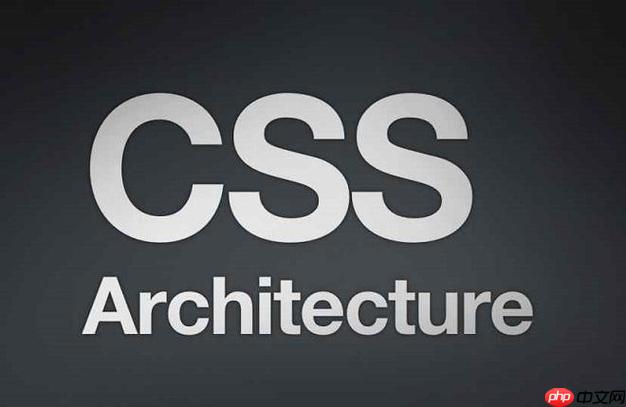核心思路是隐藏原生单选框并用label模拟样式,通过label的for属性关联input,利用:checked伪类和伪元素创建自定义外观,同时保持可访问性与功能完整。

CSS创建自定义单选框的核心思路其实很简单:我们不直接去修改浏览器默认的那个丑丑的
<input type="radio">
<label>
input
<div class="radio-group">
<input type="radio" id="optionA" name="choice" value="A">
<label for="optionA">选项 A</label>
<input type="radio" id="optionB" name="choice" value="B">
<label for="optionB">选项 B</label>
<input type="radio" id="optionC" name="choice" value="C">
<label for="optionC">选项 C</label>
</div>.radio-group {
display: flex;
flex-direction: column;
gap: 15px;
padding: 20px;
border: 1px solid #eee;
border-radius: 8px;
background-color: #f9f9f9;
}
/* 隐藏原始的单选框,但保持其可访问性 */
.radio-group input[type="radio"] {
/*
* 这种隐藏方式比 display: none; 或 visibility: hidden; 更优,
* 因为它允许屏幕阅读器和键盘导航仍然访问到元素。
*/
position: absolute;
width: 1px;
height: 1px;
padding: 0;
margin: -1px;
overflow: hidden;
clip: rect(0, 0, 0, 0);
white-space: nowrap; /* 防止内容折行 */
border: 0;
}
/* 样式化标签,使其看起来像一个自定义的单选框 */
.radio-group label {
display: inline-flex; /* 允许内部元素对齐 */
align-items: center; /* 垂直居中对齐 */
cursor: pointer;
font-size: 16px;
color: #333;
user-select: none; /* 防止文本被选中 */
padding: 8px 0; /* 给文本一些垂直空间 */
}
/* 创建自定义的圆形外观 */
.radio-group label::before {
content: '';
display: inline-block;
width: 20px;
height: 20px;
border: 2px solid #ccc;
border-radius: 50%; /* 圆形 */
margin-right: 10px; /* 与文本的间距 */
background-color: #fff;
box-sizing: border-box; /* 边框包含在尺寸内 */
transition: all 0.2s ease-in-out; /* 平滑过渡 */
flex-shrink: 0; /* 防止被挤压 */
}
/* 选中时的样式:外圈变色,并显示内点 */
.radio-group input[type="radio"]:checked + label::before {
border-color: #007bff; /* 选中时边框颜色 */
background-color: #007bff; /* 选中时背景色 */
}
/* 选中时的内点 */
.radio-group input[type="radio"]:checked + label::after {
content: '';
display: block;
width: 10px; /* 内点大小 */
height: 10px;
border-radius: 50%;
background-color: #fff; /* 内点颜色 */
position: absolute; /* 相对于父级标签定位 */
left: 7px; /* 调整位置使其居中 */
top: 14px; /* 调整位置使其居中 */
transform: translate(-50%, -50%); /* 精确居中 */
/*
* 这里需要一个更巧妙的定位,因为::after是::before的兄弟元素,
* 更好的做法是把::after放在::before内部,或者调整left/top相对于label。
* 考虑到label::before已经有了,我们可以把内点放在label::before里面,
* 或者让label::after相对于label定位,并调整其位置到::before的中心。
*
* 修正:让内点基于::before来定位,这需要稍微调整CSS结构或使用嵌套的伪元素。
* 最直接的方法是让::before作为容器,并在其内部通过伪元素创建内点,
* 但CSS无法直接嵌套伪元素。所以,我们通常让::after也作用于label,
* 然后调整其位置到::before的中心。
*/
transition: all 0.2s ease-in-out;
opacity: 1; /* 默认显示 */
}
/* 修正内点定位,使其更准确地在自定义圆圈内 */
.radio-group input[type="radio"]:checked + label::after {
content: '';
display: block;
width: 10px;
height: 10px;
border-radius: 50%;
background-color: #fff;
/* 相对于label定位,然后微调到::before的中心 */
position: absolute;
left: 12px; /* 2px border + 10px margin-right + 20px width / 2 - 10px / 2 = 7px */
top: 50%; /* 垂直居中 */
transform: translateY(-50%);
opacity: 1;
transition: all 0.2s ease-in-out;
}
/* 未选中时内点隐藏 */
.radio-group label::after {
content: '';
display: block;
width: 10px;
height: 10px;
border-radius: 50%;
background-color: transparent; /* 默认透明 */
position: absolute;
left: 12px;
top: 50%;
transform: translateY(-50%);
opacity: 0; /* 默认隐藏 */
transition: all 0.2s ease-in-out;
}
/* 焦点样式:为键盘用户提供视觉反馈 */
.radio-group input[type="radio"]:focus-visible + label::before {
outline: 2px solid #007bff; /* 蓝色轮廓 */
outline-offset: 2px; /* 轮廓偏移 */
}
/* 鼠标悬停效果 */
.radio-group label:hover::before {
border-color: #0056b3;
}说实话,每次看到浏览器默认的单选框样式,我内心都有些崩溃。它们在不同的浏览器里长得不一样,在Windows和macOS上更是天差地别,而且通常都显得非常“老旧”,跟现代网页设计格格不入。作为一个追求像素级完美的开发者,这种视觉上的不统一简直是强迫症的噩梦。
自定义单选框,不单单是为了好看。它更关乎用户体验的一致性和品牌形象的统一。想象一下,如果你的网站到处都是系统默认的组件,那用户会觉得你的设计是不是偷懒了?自定义,意味着你能完全掌控这些交互元素的外观,让它们融入你的整体设计语言,无论是颜色、大小、圆角,还是选中时的动画效果,都能做到与众不同。这就像给你的网站穿上了一套量身定制的西装,而不是随便套件现成的T恤。而且,通过合理的自定义,我们甚至可以优化点击区域,让用户操作起来更舒服,这可不是小事。
自定义组件最容易踩的坑,就是为了视觉效果而牺牲无障碍性。我们把原生的
input
立即学习“前端免费学习笔记(深入)”;
首先,也是最重要的,就是
label
for
input
id
input
其次,键盘导航。用户应该能够通过 Tab 键在不同的单选框之间切换,并且当某个单选框获得焦点时,应该有清晰的视觉反馈。这就是
:focus-visible
我个人在开发中,特别喜欢用
position: absolute; width: 1px; height: 1px; overflow: hidden; clip: rect(0 0 0 0);
input
display: none;
visibility: hidden;
即便原理看似简单,但在实际开发中,自定义单选框还是会冒出一些让人头疼的问题。
一个很常见的错误就是
label
for
input
id
label
input
id
for
另一个让人抓狂的可能是 CSS 样式冲突或者优先级问题。你明明写了样式,但它就是不生效,或者被其他样式覆盖了。这时候,开发者工具的“样式”面板就成了你的救星,它能清晰地展示哪些样式被应用了,哪些被覆盖了,以及它们的优先级。有时候,一个简单的
!important
再来就是
:checked
input
label
+
input
label
input[type="radio"]:checked ~ label
label
input
最后,别忘了跨浏览器兼容性。虽然现代浏览器对 CSS 的支持越来越好,但一些边缘情况或者旧版本浏览器可能仍然会有表现差异。在不同的浏览器和设备上进行测试是必不可少的一步,毕竟,我们希望用户无论用什么设备,都能获得一致且流畅的体验。
以上就是CSS怎样创建自定义单选框?input隐藏+label样式的详细内容,更多请关注php中文网其它相关文章!

每个人都需要一台速度更快、更稳定的 PC。随着时间的推移,垃圾文件、旧注册表数据和不必要的后台进程会占用资源并降低性能。幸运的是,许多工具可以让 Windows 保持平稳运行。

Copyright 2014-2025 https://www.php.cn/ All Rights Reserved | php.cn | 湘ICP备2023035733号